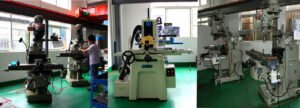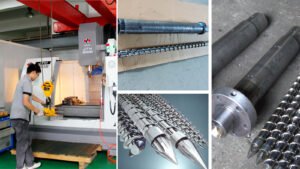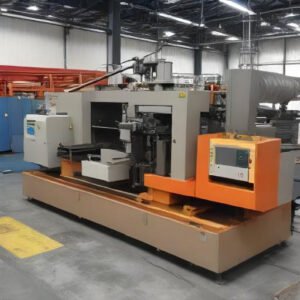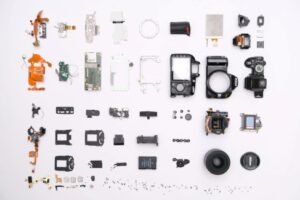Outline:
- Introduction
- Top 7 best materials for injection molding
1) Nylon (PA)
2) Acrylic
3) Polycarbonate (PC)
4) Polyoxymethylene (POM)
5) Polystyrene (PS)
6) Acrylonitrile Butadiene Styrene (ABS)
7) Polypropylene (PP) - Conclusion
Introduction

Thermoplastics are used in injection molding and they are the best suited material for injection molds because of their ability to melt and solidify back into compact shape.
Thermoplastics melt when subjected to heat allowing for plastic injection molding. Because of the versatility of thermoplastics, the majority of plastic products used today are made from them. Some thermoplastics are extremely strong and hard, whilst others are flexible and rubber-like. Some appear to be transparent while others are opaque. The versatility of thermoplastics is what makes them so enticing to producers.
The most often used thermoplastics in injection molding are polypropylene, polyethylene, and acrylonitrile butadiene styrene (ABS).
These three thermoplastic materials are used often. They are pocket friendly, reliable, and can last longer. You most likely use products created from these three materials on a regular basis, if not every day. For example, ABS is the thermoplastic used to build your keyboard.
Top 7 best materials for injection molding
When we take a broader look at the materials used in injection molding, following 7 thermoplastics prove to be the most useful in the industry.
1. Nylon (PA)

A selection of nylon quick-release buckles. This is intended to demonstrate the resilience and adaptability of nylon resin.Nylon is commonly used to make sturdy mechanical components such as bushings, gears, and bearings. It is widely used in automotive applications since it is not only durable but also helps to minimize weight and production costs in contrast to a metal analogue. You should be warned that, although being a tough plastic, it absorbs water. It’s not the best option for marine applications. Nylon is referred to by the molecular symbol PA (Polyamide).
2. Acrylic
A collection of colored acrylic tubes demonstrates the cosmetic features of this popular clear plastic resin.We employ acrylic to make transparent components such as windows, view screens, and lighting fixtures. It is frequently used as an alternative to glass due to its excellent tensile strength and weather and scratch resistance. It responds nicely to dyes and colorants, allowing you to create a wide range of artistic effects. In addition to its optical and translucent qualities, acrylic is odorless, tasteless, and free of Bisphenol A (BPA). Because BPA is a hazardous organic molecule, plastic injection molding resins such as acrylic are deemed safe for food preservation.
3. Polycarbonate (PC)
A beautiful set of polycarbonate CD discs.Polycarbonate is another transparent injection molding plastic with great optical characteristics and high durability. This granular thermoplastic material provides predictable and homogeneous mold shrinkage, allowing for exact dimensional control when molded. We utilize polycarbonate when we require something much stronger than acrylic. However, if you’re manufacturing optically clear plastic parts, the mold tool must be highly polished, which requires the use of a higher quality of stainless steel, which is more expensive. As you can see, the plastic resin you choose has a significant impact on the proper mold tool material.
4. Polyoxymethylene (POM)
Image of kitchen knives with POM handlesPolyoxymethylene (POM) is a form of acetal resin used to manufacture mechanical and automotive parts that would otherwise be fabricated from metal. This engineering thermoplastic material is extremely durable, tough, and rigid. It is commonly used to make gears, fasteners, knife handles, and ball bearings. POM is very resistant to solvents such as alcohols, gasoline, detergents, and motor oils, however it should not be exposed to hydrochloric or nitric acids.
5. Polystyrene (PS)
Image of polystyrene toolbox.Injection molding resins are frequently made from two types of polystyrene: high impact polystyrene (HIPS) and general purpose polystyrene (GPPS). GPPS is clear, but HIPS is opaque. Hard casings for toolboxes and power tool bodies are also manufactured of High Impact Polystyrene. On the one hand, PS is strong and resilient. It can withstand a lot of abuse on the field. However, this implies it is not particularly environmentally beneficial.
6.Acrylonitrile Butadiene Styrene (ABS)

An image of the ABS computer keyboard keys. This is one of the most typical uses for this sort of plastic. ABS resin is a thermoplastic polymer that is both opaque and technical grade. There are numerous benefits to using ABS. It’s robust, has good dimensional stability, can withstand impacts and scratches, and is difficult to break. Additionally, the low melting point makes it simple to mold. It is often used to make electronic components such as phone adaptors, keyboard keys, and plastic wall socket guards. Why is this happening? Because ABS is a good insulator, it will not conduct electricity or emit fumes if exposed to fire. These are significant issues for product creators working with electrical devices.
7. Polypropylene (PP)
An illustration of a red polypropylene bottle cap with a live hinge.
Because it prevents pollutants from contaminating food, this thermoplastic injection molding material is widely employed in the food storage and packaging business. Polypropylene (PP) may be washed in hot water without degrading and has excellent chemical and moisture resistance. PP has extremely high impact strength, flexibility, and toughness. Designers should also be aware that PP is easily recyclable, and because of its flexibility, it may be utilized to create living hinges that can be bent repeatedly without ripping.
What is the best plastic injection molding resin to utilize in your projects?
The ideal resin is one that works for you and your specific needs. The good news is that there are thousands of plastic injection molding resins to select from, each with comparable – but not identical – qualities, so there are numerous potential solutions.
When selecting a plastic, you must first evaluate the part’s function as well as the physical environment to which it will be exposed. So, plainly, you’ll need to evaluate what type of injection molding material will withstand various environmental problems such as temperature variations, moisture, chemical exposure, UV light, and so on. The material’s strength, durability, flexibility, color, and cost are all factors to consider. You can contact our team of experts at Kuixing Electronics to guide you further in choosing the best polymer for your items.
Conclusion:
In conclusion, thermoplastics, particularly polypropylene, polyethylene, and acrylonitrile butadiene styrene (ABS), dominate the field of injection molding due to their affordability, durability, and versatility. However, expanding beyond the basics, other thermoplastics like nylon, acrylic, polycarbonate, polyoxymethylene, and polystyrene offer unique properties catering to specific applications, such as mechanical components, transparent parts, and durable mechanical and automotive parts. The choice of the best resin depends on the specific project requirements, considering factors like environmental conditions, strength, flexibility, and cost. For personalized guidance, contacting experts like Kuixing Electronics can ensure the selection of the most suitable polymer for specific injection molding projects.
External links:
https://en.m.wikipedia.org/wiki/Injection_moulding#Examples_of_polymers_best_suited_for_the_process
